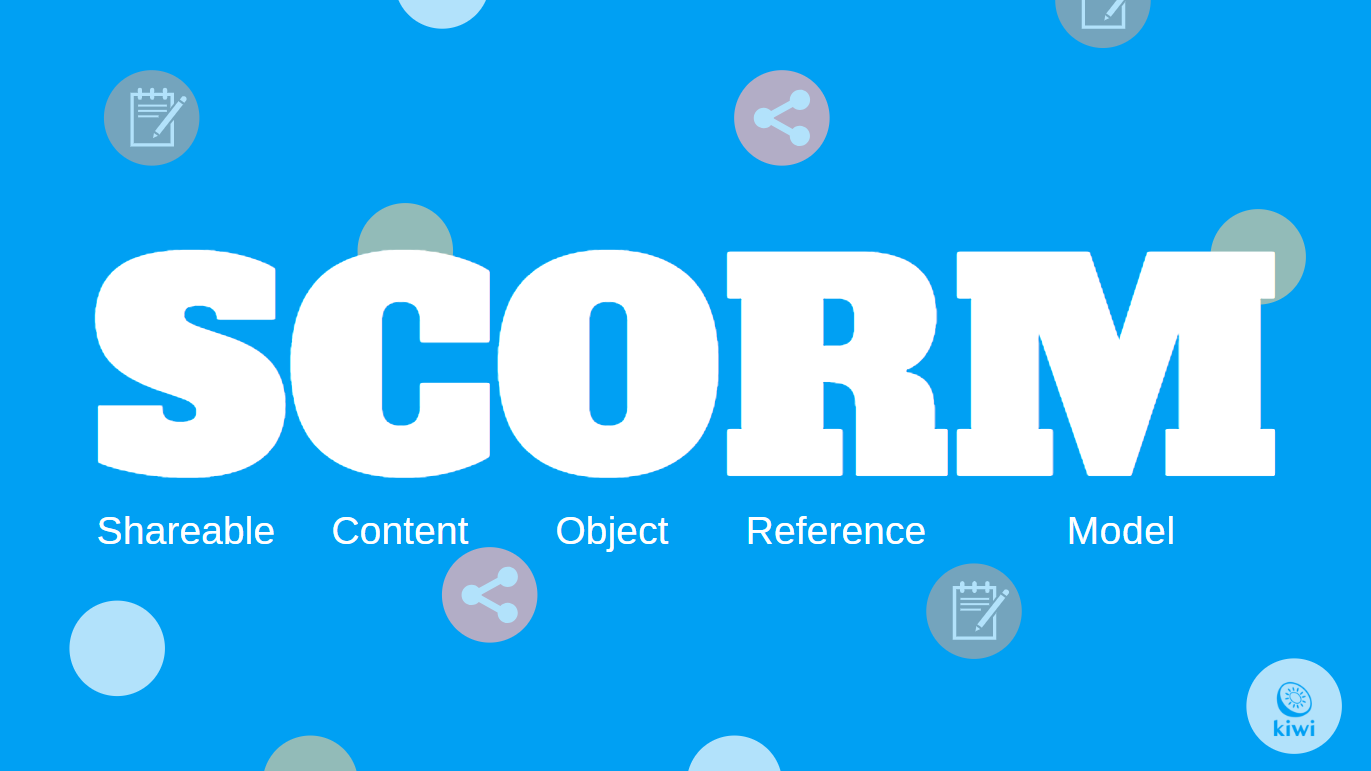19 Apr

SCORM is a widely accepted standard and it defines the way Learning Management Systems are ought to be built. SCORM strives for standardized LMSs and training content so that they work well with other SCORM conformant systems. A SCORM conformant systems can accept content from other SCORM LMSs and make it accessible to its users.
Contrary to popular belief SCORM is not an open standard, however, it is widely accepted and thus, considered the defacto standard.
What it means (Reduce the chaos)
SCORM is an acronym and it stands for: Shareable Content Object Reference Model. By definition, SCORM sets a way of building a learning management system training and course content in a way that is shareable in other SCORM compliant systems. Simply said SCORM is a way to create uniform content that is easy to package and share.
SCO and RM
A Sharable Content Object (SCO) is a standalone resource that communicates with the LMS that launched it. The best way to explain it would be to compare it to a module or a chapter. An SCO can be a webpage or multiple webpages.
The versions of SCORM
SCORM 1.1
SCORM 1.1 is the first ever version of SCORM. It never really gained wide acceptance and was not fully adopted.
SCORM 1.2
SCORM 1.2 was created to fix and solve the problems of SCORM 1.1. This version became quite fully adopted and accepted. Major LMSs still produce content that meets the specifications of Scorm 1.2.
SCORM 2004
SCORM 2004 is the latest version of SCORM. This version’s additions allow the vendors to specify behavior within the SCO and between different SCOs. What this does is that it improves the quality of the content while at the same time increasing the reuse of SCOs. This version has not been greatly adopted but there have been improvements.
The pros of using SCORM
- 3rd party support
- Ready-made e-learning interactions
- Your content is supported by most Learning Management Systems
- Learning interactions can be transferred from one LMS to another
The cons of using SCORM
- Insecure
- Complicated format
- “Compliance” isn’t functionality
- Learning interactions use a lot of space
- Learning interactions take a long time to download
xAPI vs SCORM: Which Should You Choose?
Due to changes in the learning industry and the need for updated frameworks, Tin Can or xAPI came to life. Deciding between the two could be a decision for many factors, starting from your preferences, content type, etc. Even though SCORM is still more widely used, xAPI has brought some important changes into the standardization of training content.
What is xAPI?
An xAPI or as it was previously known, Tin Can, is a protocol of tracking training content related activities. By age, it is younger than SCORM, but by function, some might consider it more advanced. It was released on April 2013 and knocked SCORM off its throne.
What differentiates xAPI from SCORM is that it allows you to track learning in almost any context, not just in the LMS. It is more advanced in the sense that it works both online and offline and has the ability to draw connections between employees experience with the training and their job performance. It also uses more accessible technologies.
To sum up
SCORM is considered by many as an outdated framework, but by others, it is still considered as the defacto standard. Its unusual name and technical nature make it difficult for eLearning professionals to understand. Use it or not, it is entirely up to you and your requirements.





SCORM Compliant Software
SCORM Compliant Software means that an eLearning software solution or piece of online learning content is interoperable.